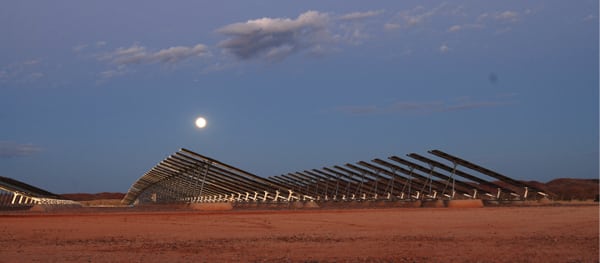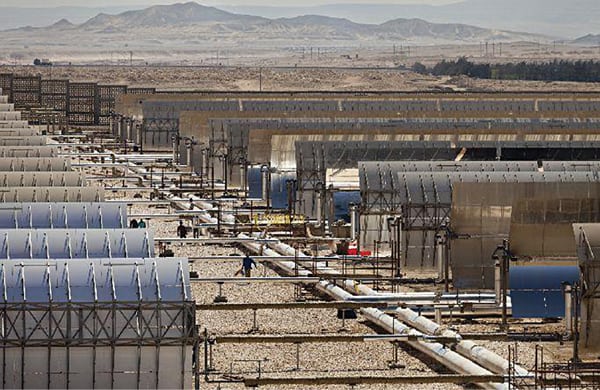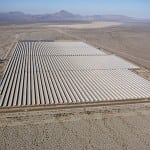Australian company Horizon Power opened the country’s first hybrid solar-diesel power station in August near Marble Bar, and it is readying another for operation in the neighboring town of Nullagine, Western Australia—a region infamous for extremely hot temperatures. The power stations are the first “high penetration, hybrid solar-diesel systems” in the world, claims Horizon, adding that they will “set new benchmarks for hybrid, stand-alone systems.”
The two projects will each essentially combine solar and diesel generation with a flywheel energy storage system to generate 1,048 MWh, about 30% of annual power needs for both towns. The company is working with development partners PowerCorp. Pty. Ltd. and Sunpower Australia to build the new power stations at a cost of A$30 million/US$27.8 million (A$4.9 million of which was federally granted). Construction includes the installation of more than 2,000 solar panels—1,008 in Marble Bar (Figure 2) and 900 in Nullagine—and incorporation of solar tracking systems that follow the path of the sun in each town throughout the day.
 |
| 2. Two ways about it. Australia’s Horizon Power opened the country’s first hybrid solar-diesel power station near Marble Bar, Western Australia, one of the nation’s hottest regions. The plant supplements harvested energy from 1,008 solar panels, shown here at night, with diesel power, using stored inertial energy during the transition as the diesel comes up to speed. Courtesy: Horizon Energy |
According to Horizon Energy, Marble Bar’s solar threshold is estimated at 10 MW before the station would need to rely on diesel, yet the plant is equipped with 140,000 tanks to supply about a month’s worth of diesel. Diesel was preferred over natural gas because the latter would require building support infrastructure to reach the town some hundred kilometers (km) from existing routes. Solar was the natural choice to replace aging diesel power plants: Marble Bar, on average, experiences 154 days every year with temperatures over 100F.
Solar hybrid plants are quickly gaining popularity around the world. At the end of June, Xcel Energy fired up a demonstration integrating a 4-MW parabolic trough system and an existing 44-MW coal-fired power plant (see “Xcel Energy Fires Up Solar/Coal Hybrid Demonstration” in POWER’ s September issue for more details). Last year, Israeli company AORA commissioned a 100-kW solar tower that uses compressed air to drive a micro-turbine. That company says the microturbine can also be run on biodiesel, natural gas, and biogas.
This fall, meanwhile, a 150-MW solar–natural gas hybrid is expected to be fully operational at Kuraymat, 95 km south of Egypt’s capital, Cairo (Figure 3). The €250 million plant, being built on the banks of the Nile River, involves a parabolic trough solar field with nearly 2,000 collector units (130,000 square meters of mirror surface). It will also feature a natural gas generator to ensure that the plant can generate power around the clock. The plant’s owner, the Egyptian New and Renewable Energy Authority, hopes the project will lead North Africa’s drive to build large renewable installations. It has already generated interest: Blue-chip European firms backing the €400 billion Desertec project are hoping that the Egyptian plant will serve as a template for the initiative that would connect a network of solar thermal plants in North Africa to Europe with high-voltage transmission lines.
—Sonal Patel is POWER’s senior writer.
 |
| 3. From the eye of Ra. The Egyptian New and Renewable Energy Authority will this fall put into operation a 150-MW solar thermal–natural gas hybrid that features nearly 2,000 parabolic trough collectors (130,000 square meters of mirror surface). The plant at Kuraymat, 95 kilometers south of Cairo, is generating interest from developers of the Desertec project, a €400 billion initiative that seeks to harvest solar thermal power for Europe from North Africa via high-voltage transmission lines. Courtesy: Flagsol |










